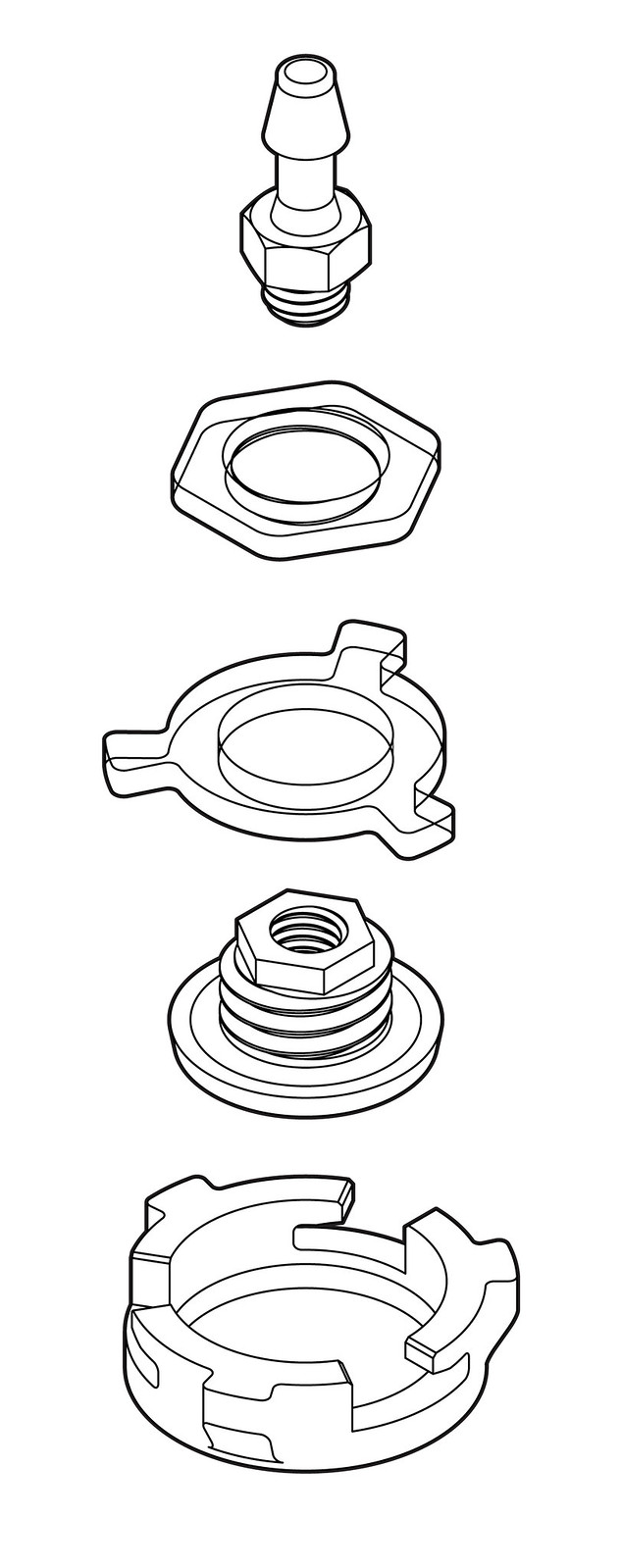Multiplanar
10 Dec 2015
Final project for Computational Design + Fabrication (CS294-119) with Jonathan Bachrach.
Even as increasingly functional geometries are fabricated using multi-material 3D printers, a large set of 3D geometries are incompatible with 3D printing such as those of clothing and furniture. It is much more natural to decompose these geometries based on their constituent surfaces rather than at incremental layers along one axis. Instead of attempting to 3D print these geometries, we can similarly leverage the benefits of multi-material printing by augmenting the planar materials these objects are made of. As an example of multi-material 2D fabrication, we embroider stiffening threads into a stretchy fabric to control its stiffness in certain orientations. This fabric is used to create inflatable actuators whose deformations are defined by the embroidered pattern. A software program is created to generate the appropriate fabrication files from high level descriptions of mechanisms composed of these actuators.
special thanks: Ethan Chiou
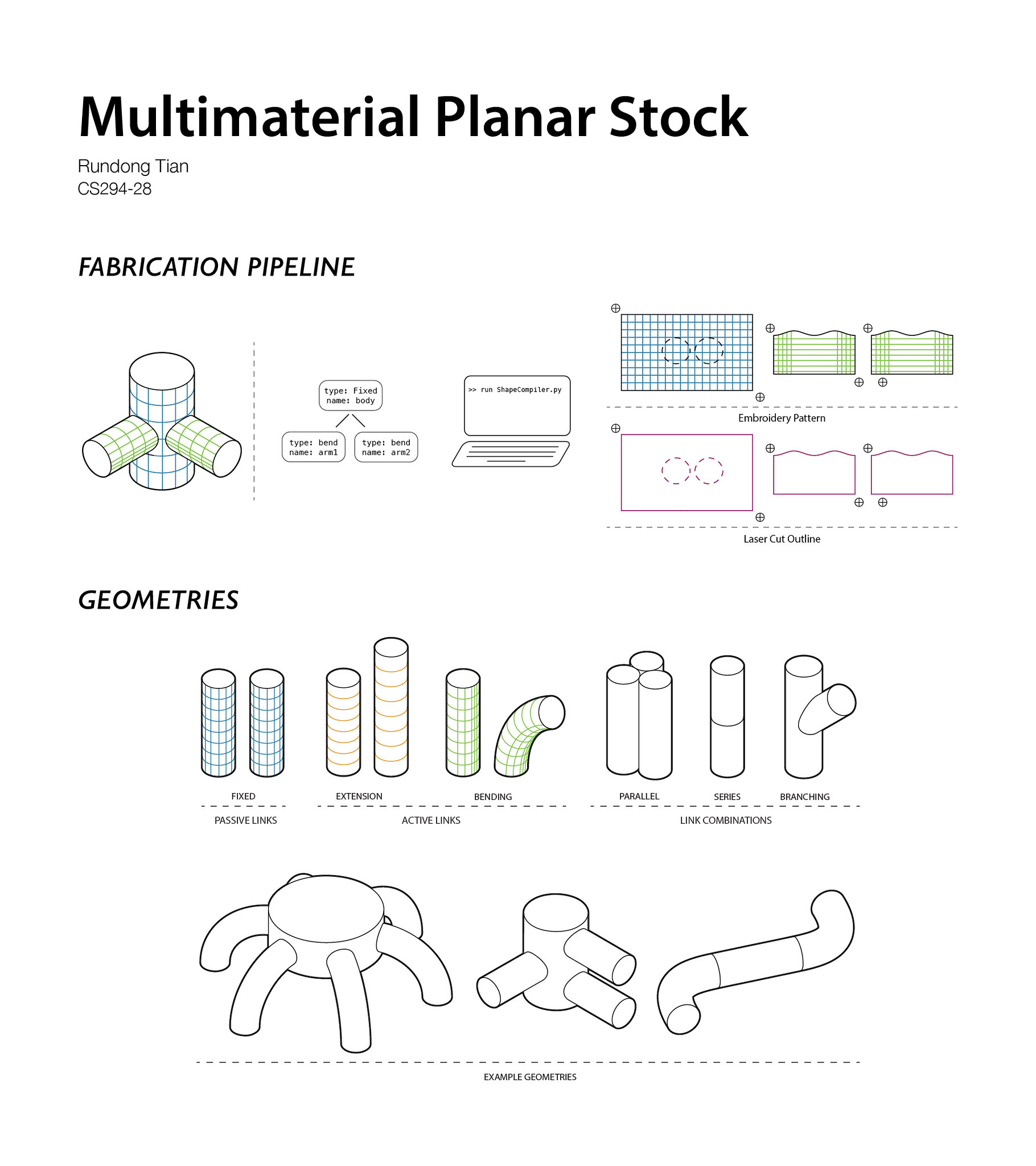
Custom pinch valves

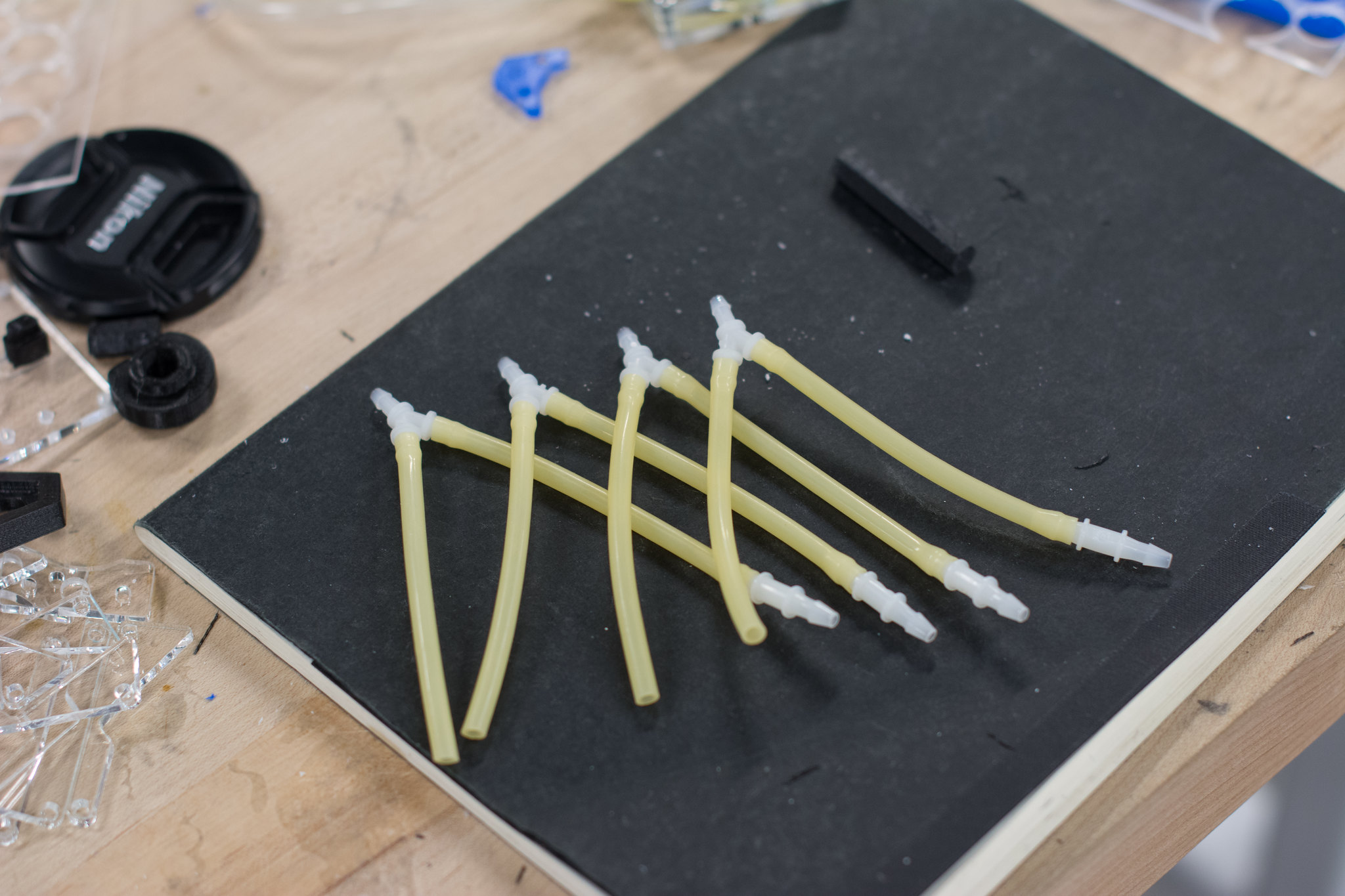
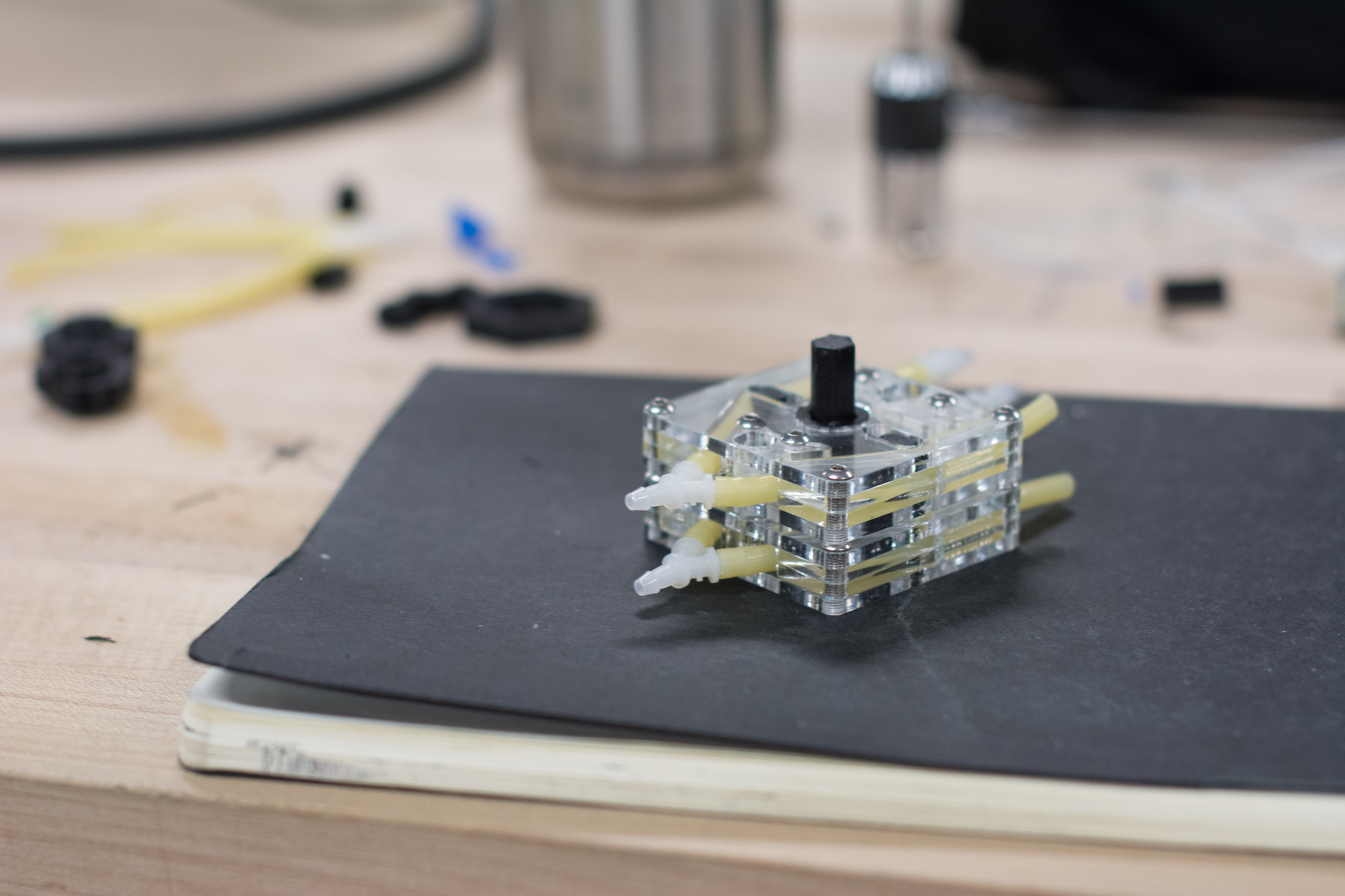
Gripper open
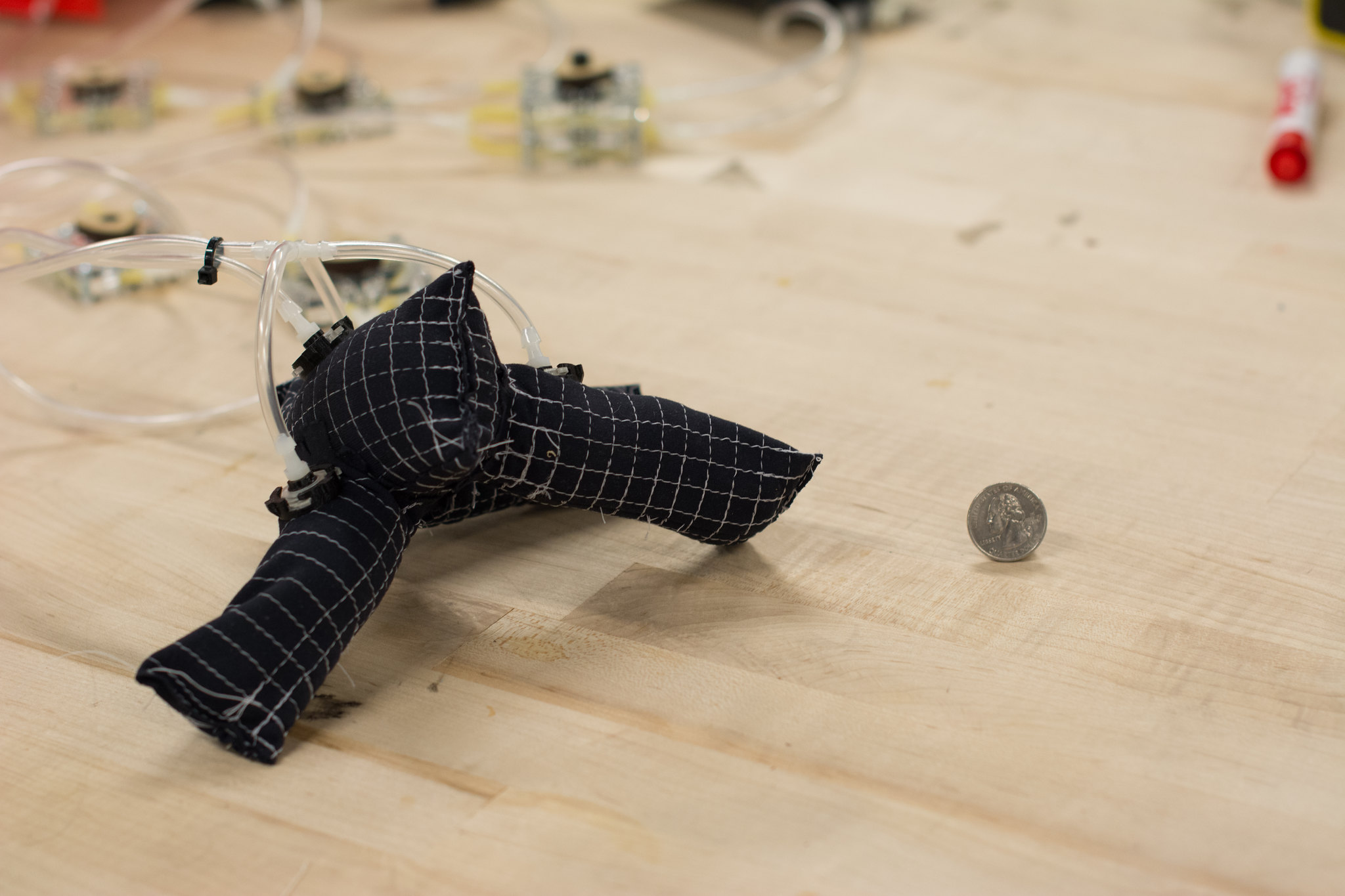
Gripper close
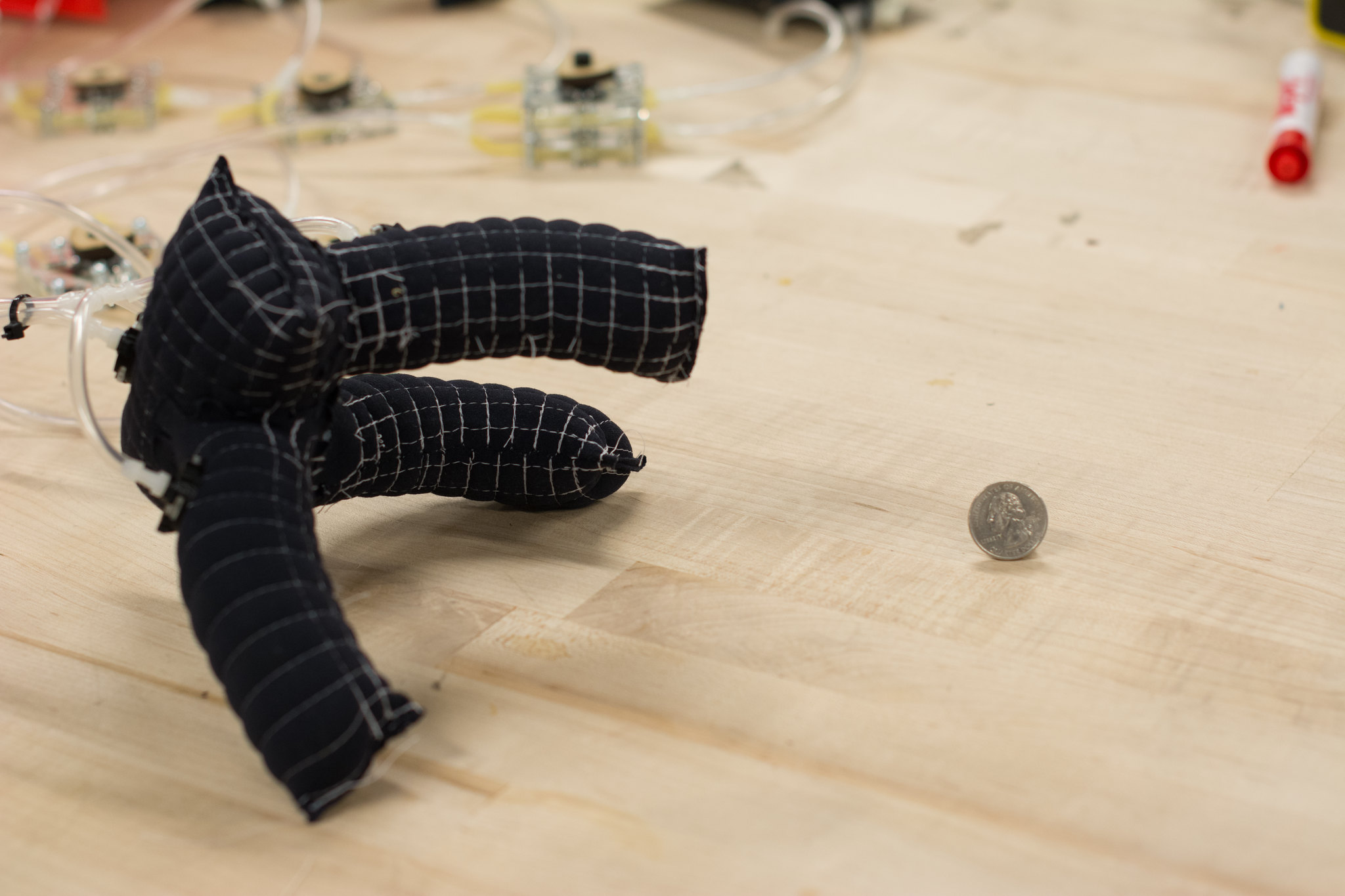
Interface between the balloon and the fabric
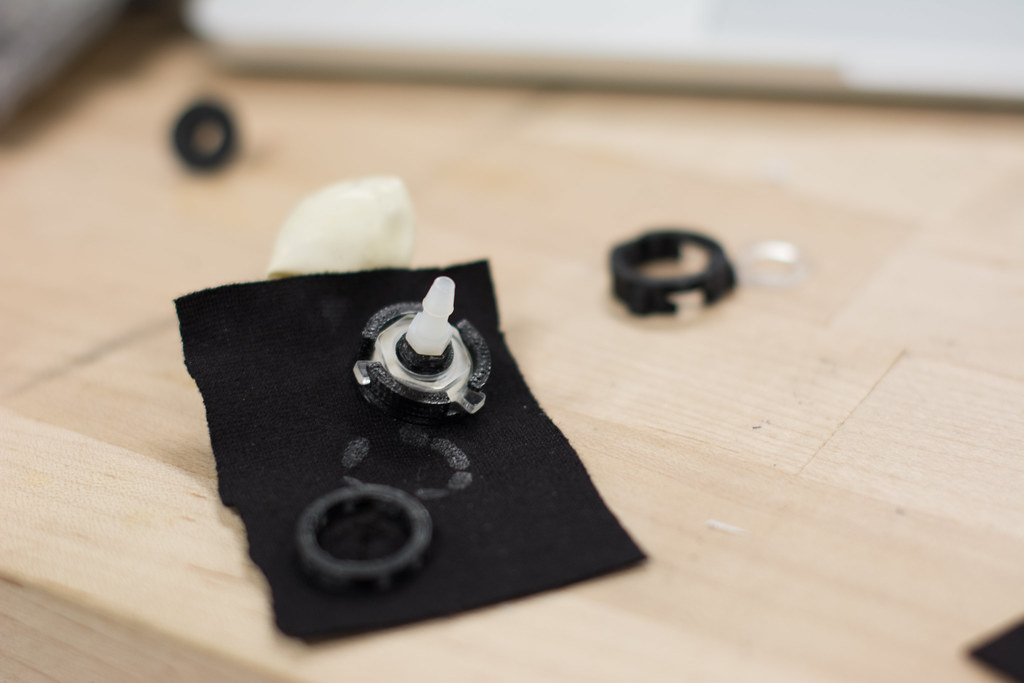
Exploded view of the balloon to fabric adapter
From top to bottom: nylon tubing barb to male thread, laser cut acrylic nut, laser cut acrylic washer, 3D printed balloon barb, balloon receiver.
